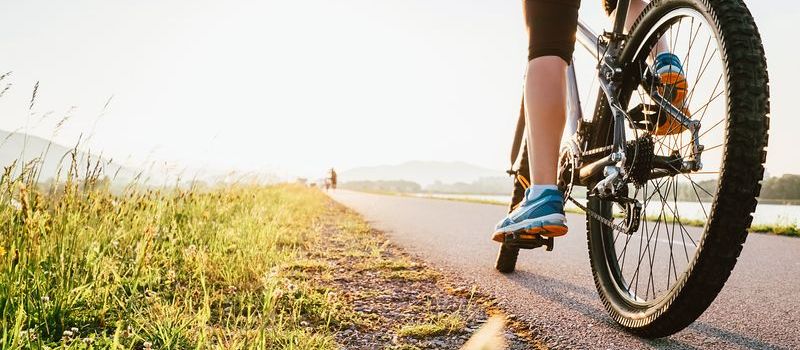A guide to cycling
Published July 12, 2022

Benefits of cycling
Cycling has benefits, not only to your physical and mental health but also for the community and environment.
Health benefits of cycling
Cycling improves cognitive function, heart health and mental health, in some studies as little as one hour a week of cycling has been shown to improve fitness and heart health.
Environmental benefits of cycling
Using cycling as your way of getting around helps keeps vehicles off the road, reducing greenhouse gases. Bikes also reduce the need to build, service and dispose of cars; and they help conserve roadways and residential spaces, leading to less concrete and more plant life in your neighbourhood.
Financial benefits of cycling
Riding a bike instead of driving a car can save you money. Riding a bike 10km each way to work each weekday can save about $1,700 per year. Also, bike parking is usually free, easily accessible and more convenient than car parking.
Social benefits of cycling
Bike riding can provide an affordable and independent travel source for people who can’t afford or access a car. The construction of more shared pathways allows pedestrians and people with disabilities access to an increased network of paths and improved road crossings.
Cycling tips for beginners
If you’re new to cycling, you need to take a few essential steps to get off to a good start:
1. Get the right bike
Be sure to invest in a bike that will support your riding goals. A road bike is a likely option, but if you want to take it along mountain trails too, talk to your local bike shop about hybrid options. If you’re getting an old bike out of retirement or buying a second-hand bike, you may want a specialist bike shop to give it a service.
Once you have the right bike, you’ll need to set it up specifically for you — this includes adjusting the seat so that your feet can only just touch the ground when you’re upright. It can be trial and error, so keep adjusting the seat until it feels right.
2. Get the right safety gear
Safety gear is essential, and in Australia bike helmets are mandatory. A helmet made to Australian safety standards, lights and reflectors and hi-visibility clothing are important safety essentials, especially for cycling at dawn, dusk, or during low visibility. Don’t forget to pack a basic repair and medical kit to look after yourself and the bike if you take a fall.
3. Getting on the bike
The next step is to get on your bike and ride. If you’re a novice, or you’re out of the habit of cycling, find yourself a traffic-free area to begin with, such as your local park.
Practise riding single-handed to make hand signals, and get comfortable looking, over both shoulders to improve your visual awareness.
Depending on what you’re working towards, start with shorter trips and work your way up to longer distances over planned intervals.
4. Stay hydrated and sun safe
Bike riding, especially in the heat of summer, so plan a water stop along your route or carry water in a bottle cage attached to your bike. Don’t forget your sunscreen, especially on the back of your neck, wear long sleeves and sunglasses to protect you from the sun.
5. Learn basic bike maintenance
Learning to change a flat and look after your bike can keep you safe and prevent you from getting stranded on a ride. Check out bike maintenance tutorials online for more tutorials. Don’t forget to bring a spare tube with you.
6. Staying safe while cycling
Wearing the proper safety equipment for the conditions, knowing your route and sticking to well-lit areas at night can help keep you safe. Always take your mobile with you in case you need to call for help. For extra motivation, it can also help you track how many kilometres you’ve ridden via apps such as GoCycle or Strava. Never ride with headphones or an earpiece, you will always need to hear what’s around you. Riding with a buddy can also help keep your safe, two cyclists seen better on the roads than one. Ensure you know the road rules for your area, and if you are cycling on the road, you know which hand signals to use.
7. Stay motivated and keep cycling
One of the easiest ways to integrate cycling into your week is to make cycling a means of transport. Ride to the shops, work or school or cycle to your favourite café to meet your friends.
Joining a bike race or a park cycle group can also help you stay motivated and reach your fitness goals.
8. Eating well for cycling
As you get more experienced with cycling and take longer rides or participate in racing, making sure you eat enough macronutrients for energy and recovery will become necessary. Eating a balanced diet full of vitamins and essential nutrients are vital in building up the strength and stamina you will need to get the most out of cycling.
MAT-AU-2201721
Learn about which Nature's Own product may be appropriate for you.
SEE THE PRODUCTS HERE







